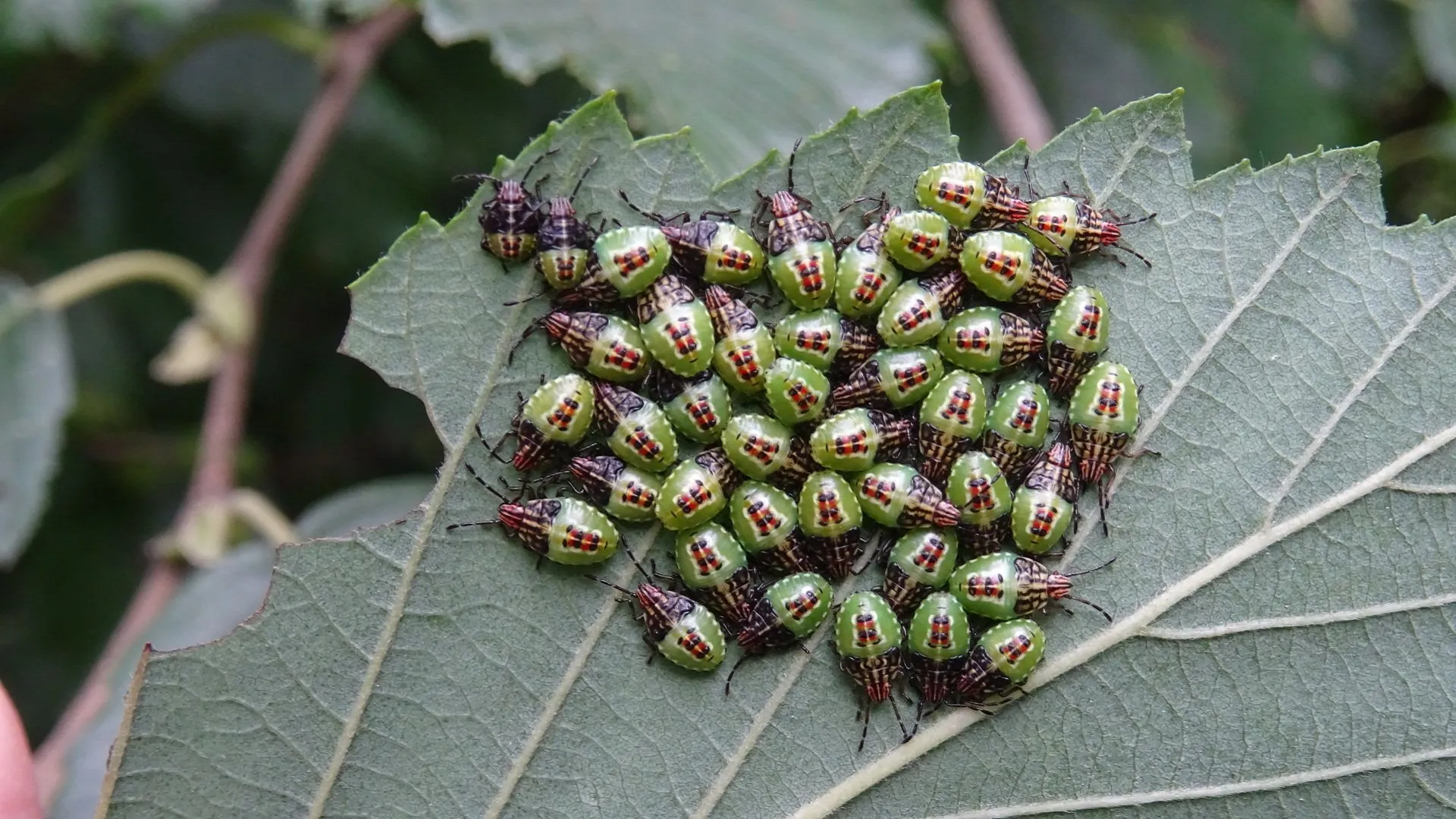Hemiptera are a large order of insects containing true bugs, including leafhoppers, aphids and many others. They typically have piercing and sucking mouthparts. Shieldbugs are so-called because of the shape of their bodies.
Hawthorn Shieldbug
Acanthosoma haemorrhoidale
Distinctive species with lateral extensions of the pronotum that are marked with red, the scutellum is green and the abdomen is often red-tipped. Adults (13-15mm) can turn darker prior to hibernation. They overwinter and emerge during spring to mate. The larvae mainly feed on hawthorn berries, but are sometimes found on other trees.
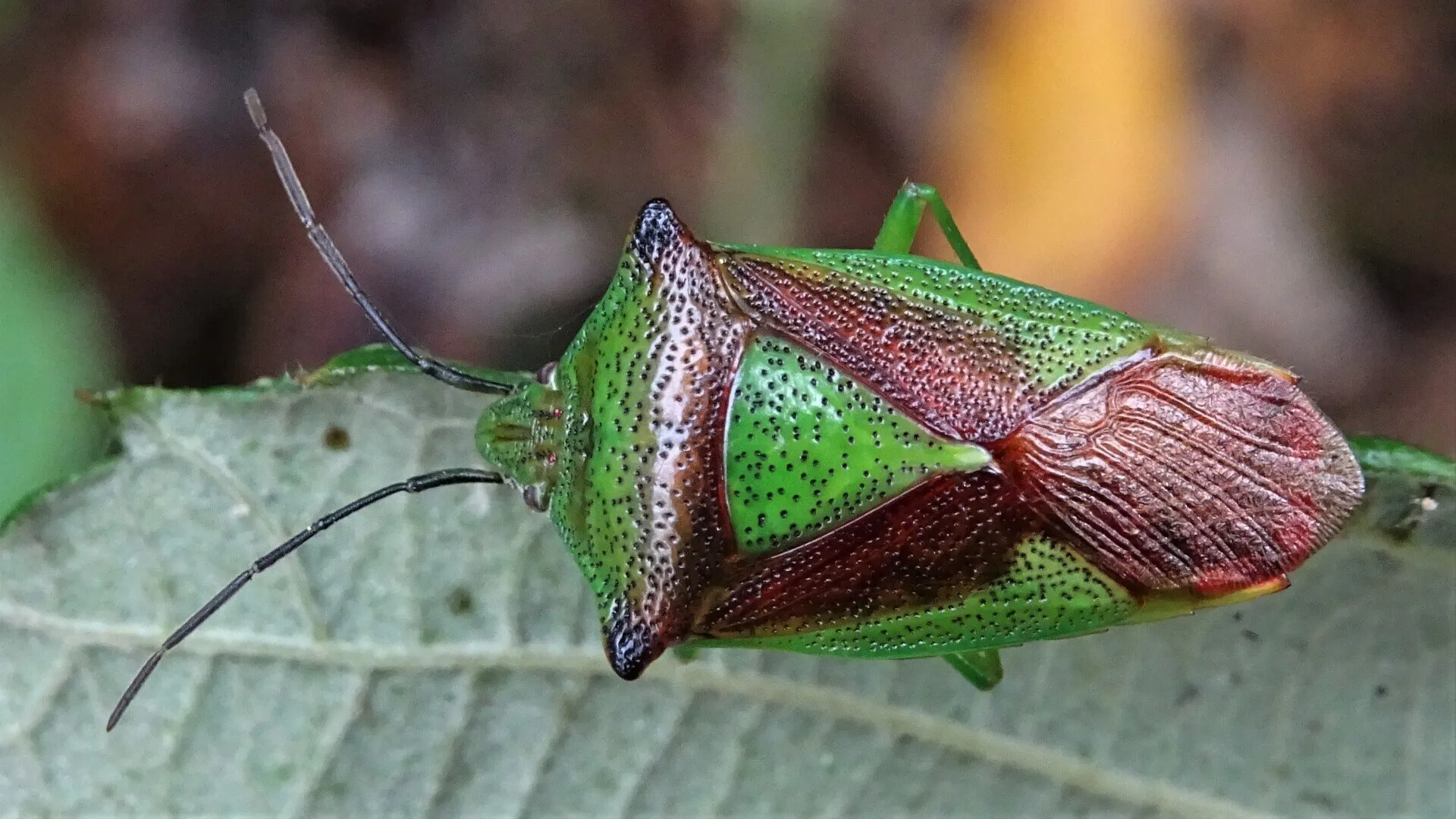
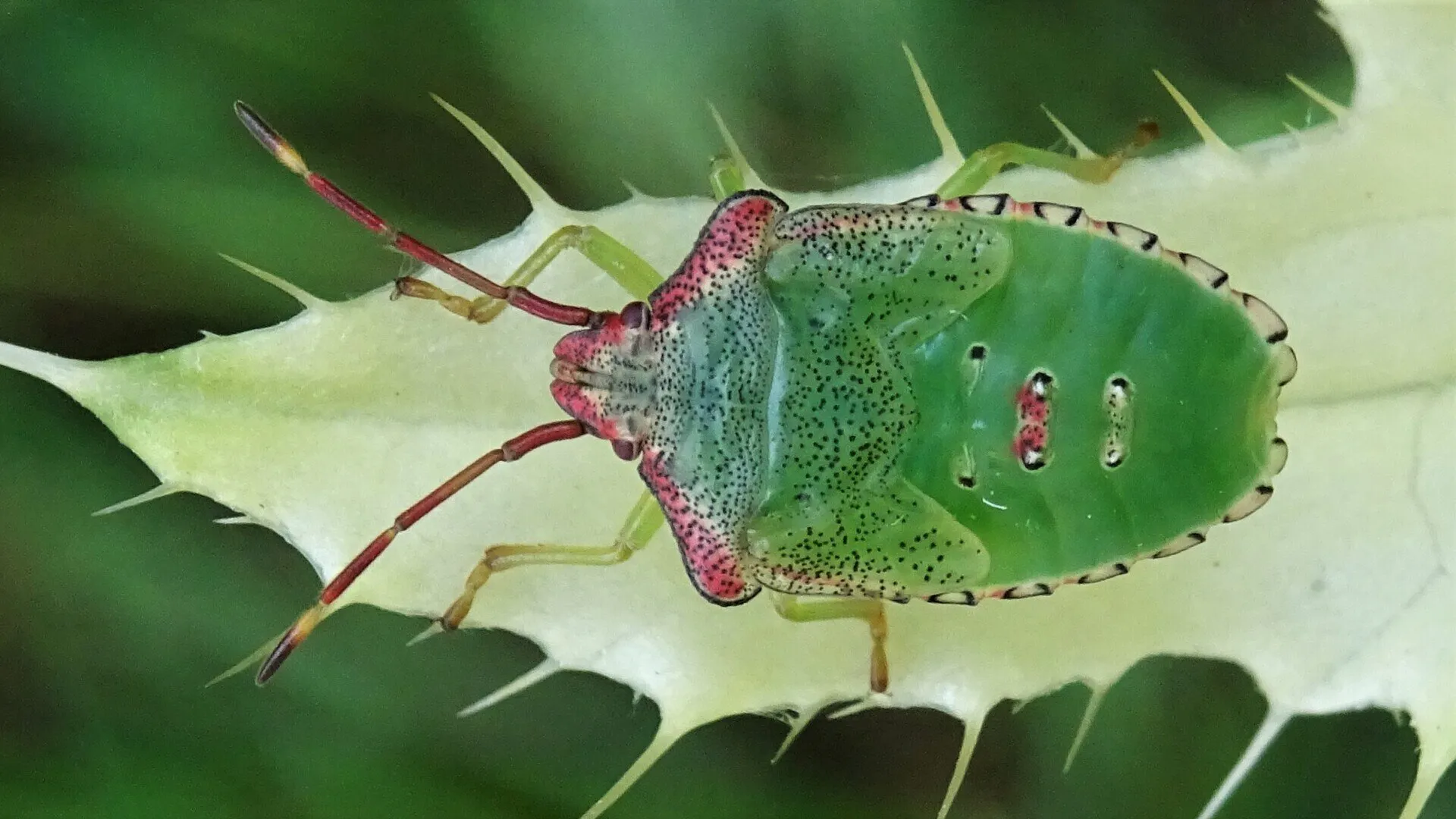
#
Birch Shieldbug
Elasmostethus interstinctus
This species (8-11mm) is found in birch woodland. It is smaller than the Hawthorn Shieldbug and the lateral extensions of the pronotum are not marked with red. Adults overwinter and emerge in spring to mate. Birch is the main larval foodplant, but sometimes hazel and aspen are used as food sources instead. The new generation is complete by August.
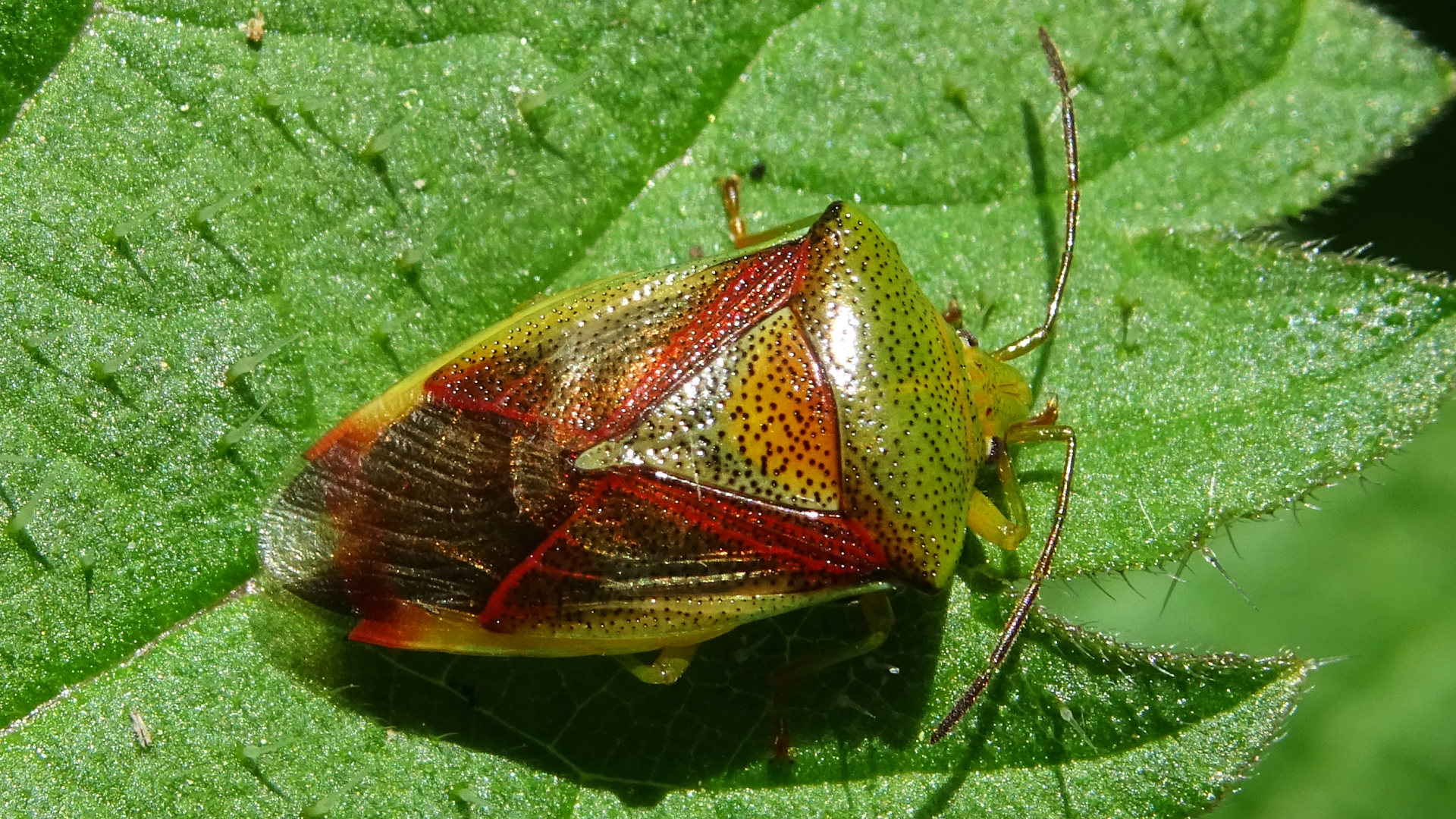
#
Parent Bug
Elasmucha grisea
The Parent Bug (7-9 mm) has a black and white connexivum and there is usually a black patch on the scutellum. Adults overwinter and emerge in spring to mate. Soon after mating the male dies leaving the larger female to tend the eggs and young larvae. New adults appear from August onwards. The tiny green instars can sometimes be found grouped on the underside of alder and birch leaves. Birch and alder are larval foodplants.
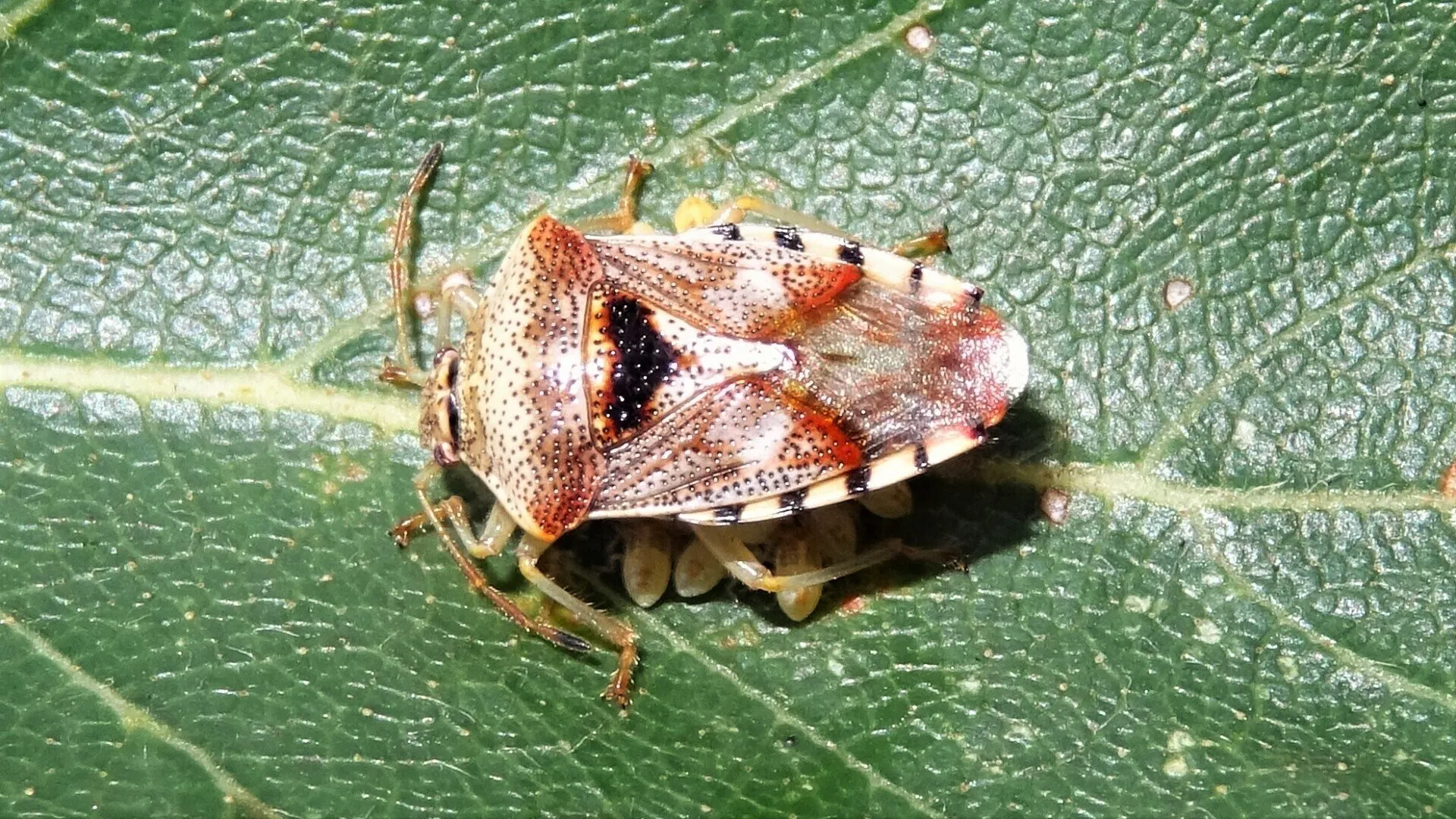
Tortoise Shieldbug
Eurygaster testudinaria
Markings and ground colour vary on the Tortoise Shieldbug. There is a noticeable central depression at the front of the head. The nymphs feed on various grasses. Length 9-11 mm.
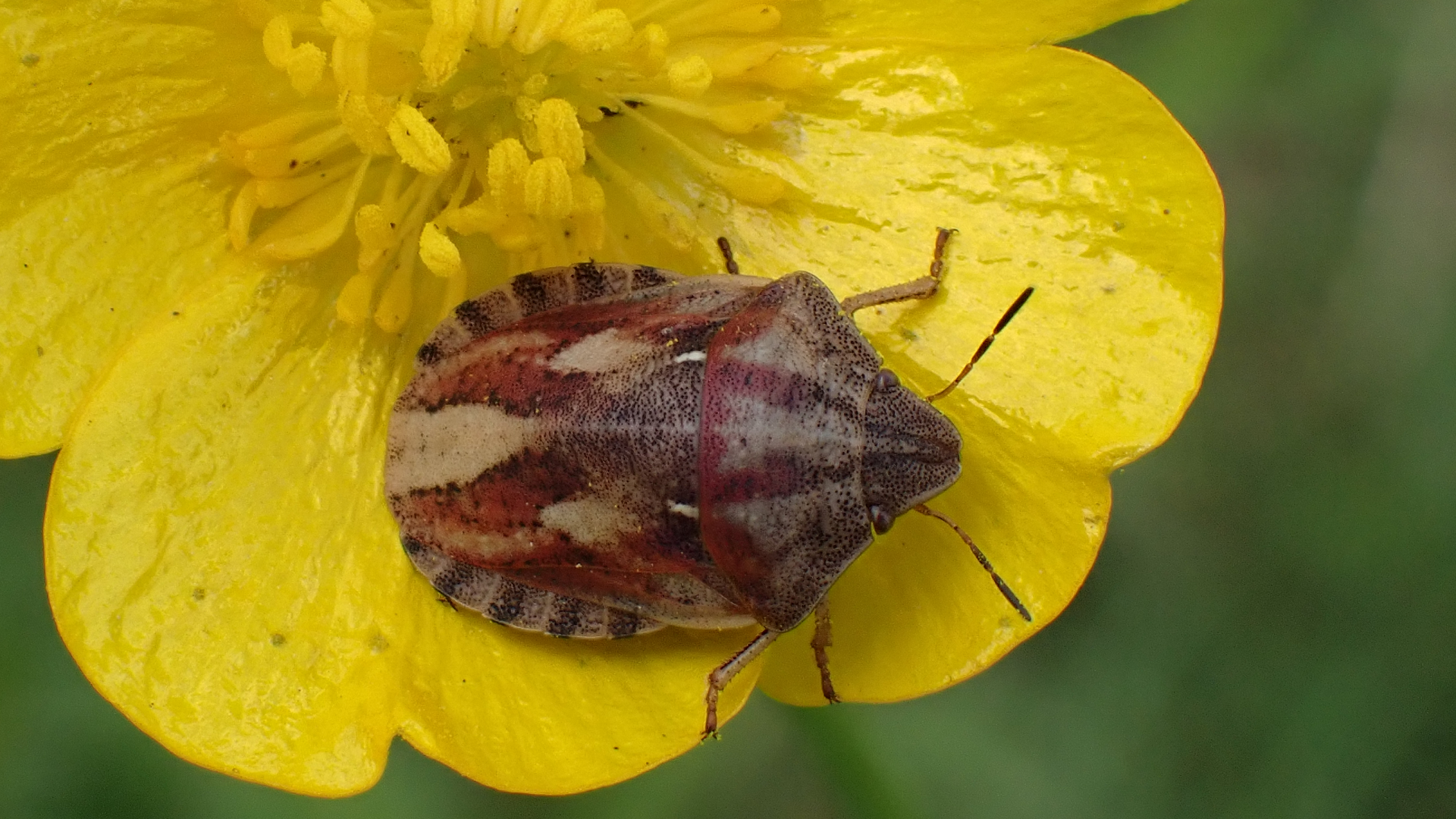

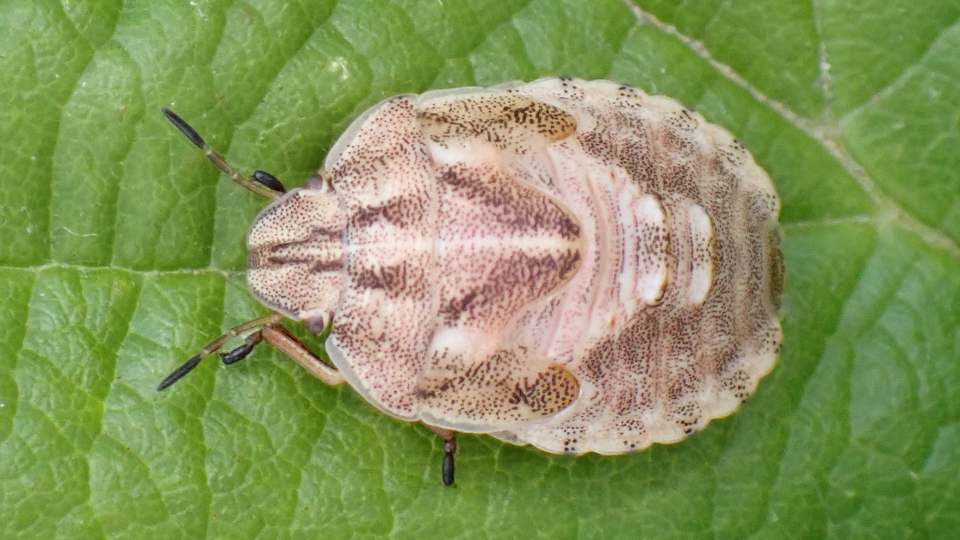
#
Pied Shieldbug
Tritomegas bicolor
Ground-dwelling species (5-7mm) that feeds on White dead-nettle and Black horehound. The female cares for her eggs.

#
Turtle Shieldbug
Podops inuncta
Mainly dwells on the ground. It has a long tongue-like scutellum which reaches the rear of the abdomen and two small projections on the pronotum at each side of the head. Adults (5-6 mm) mate and lay eggs in spring and early summer. The larvae feed on various grasses.
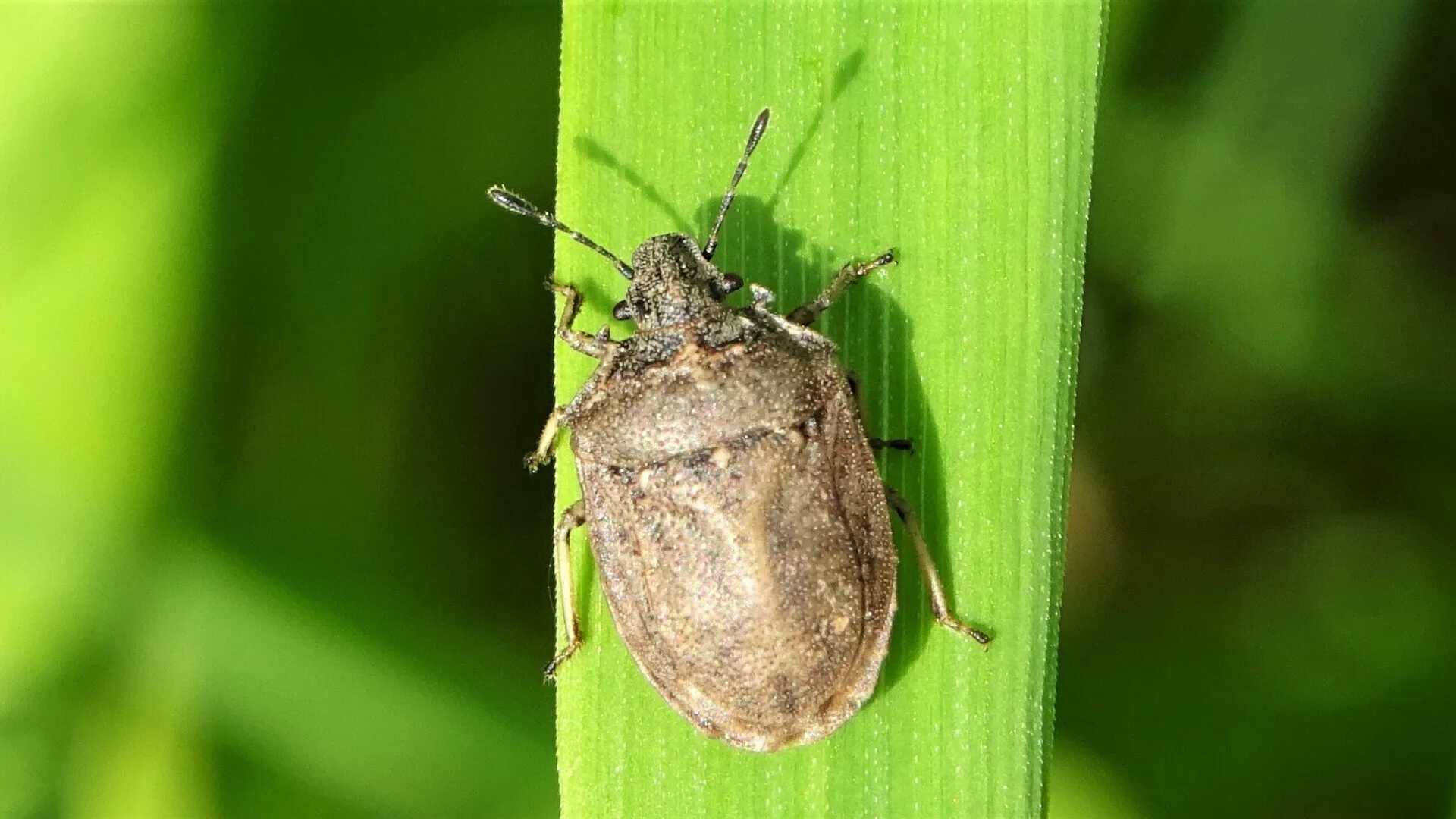
#
Bishop's Mitre
Aelia acuminata
This species has a pointed head, striped body and ridged pronotum. Adults ( 8-9mm) can be found throughout the year in tall dry grassland. Mating and egg-laying occurs during spring and summer. The larvae feed on the ripening grass seed. New adults appear in autumn.
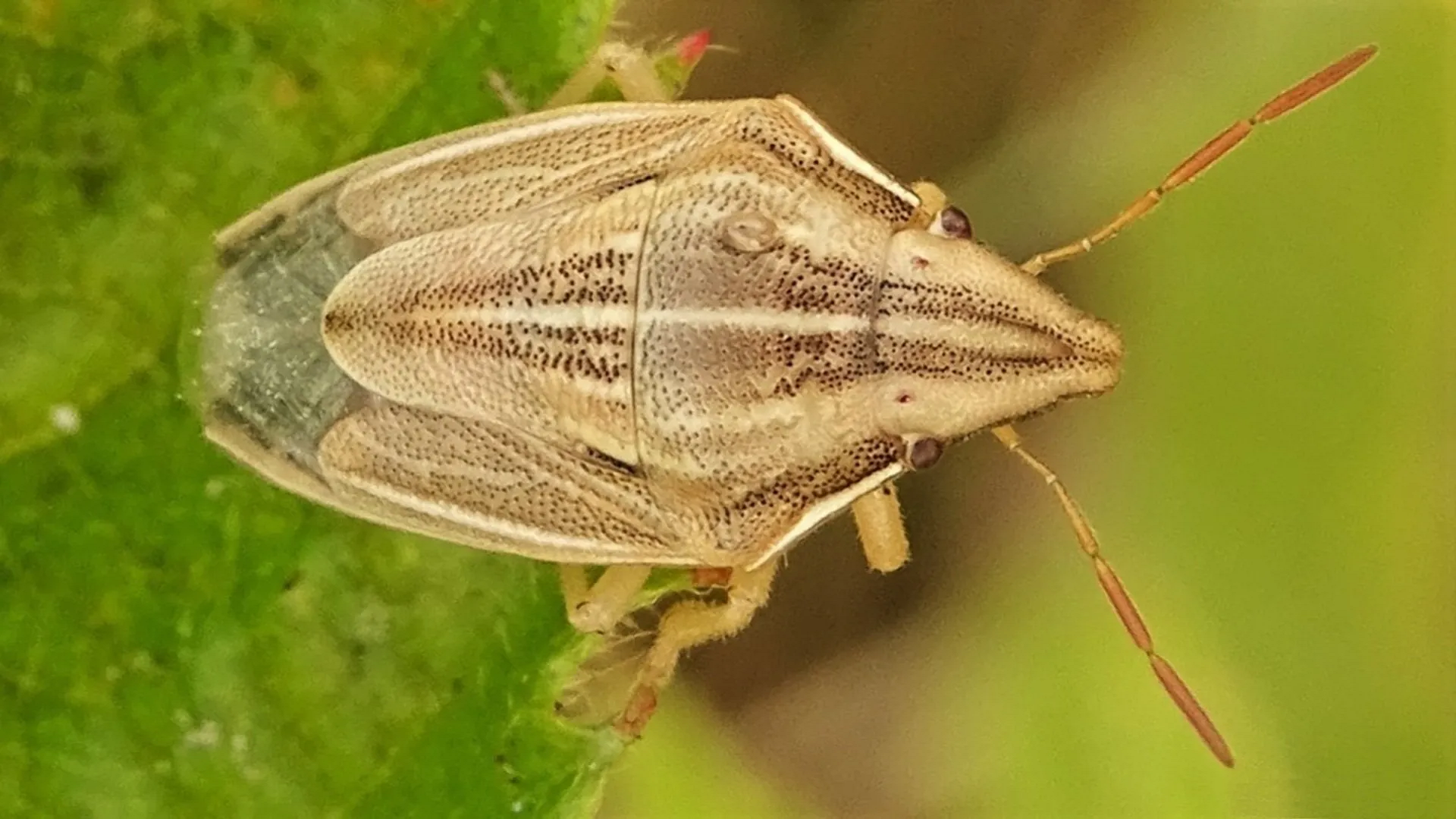
#
Woundwort Shieldbug
Eysarcoris venustissimus
Tiny greyish-bronze species (5-7mm) found on hedge woundwort and occasionally black horehound and nettles. The head, front of the pronotum and scutellum are copper coloured, while the connexivum is decorated with black and white.
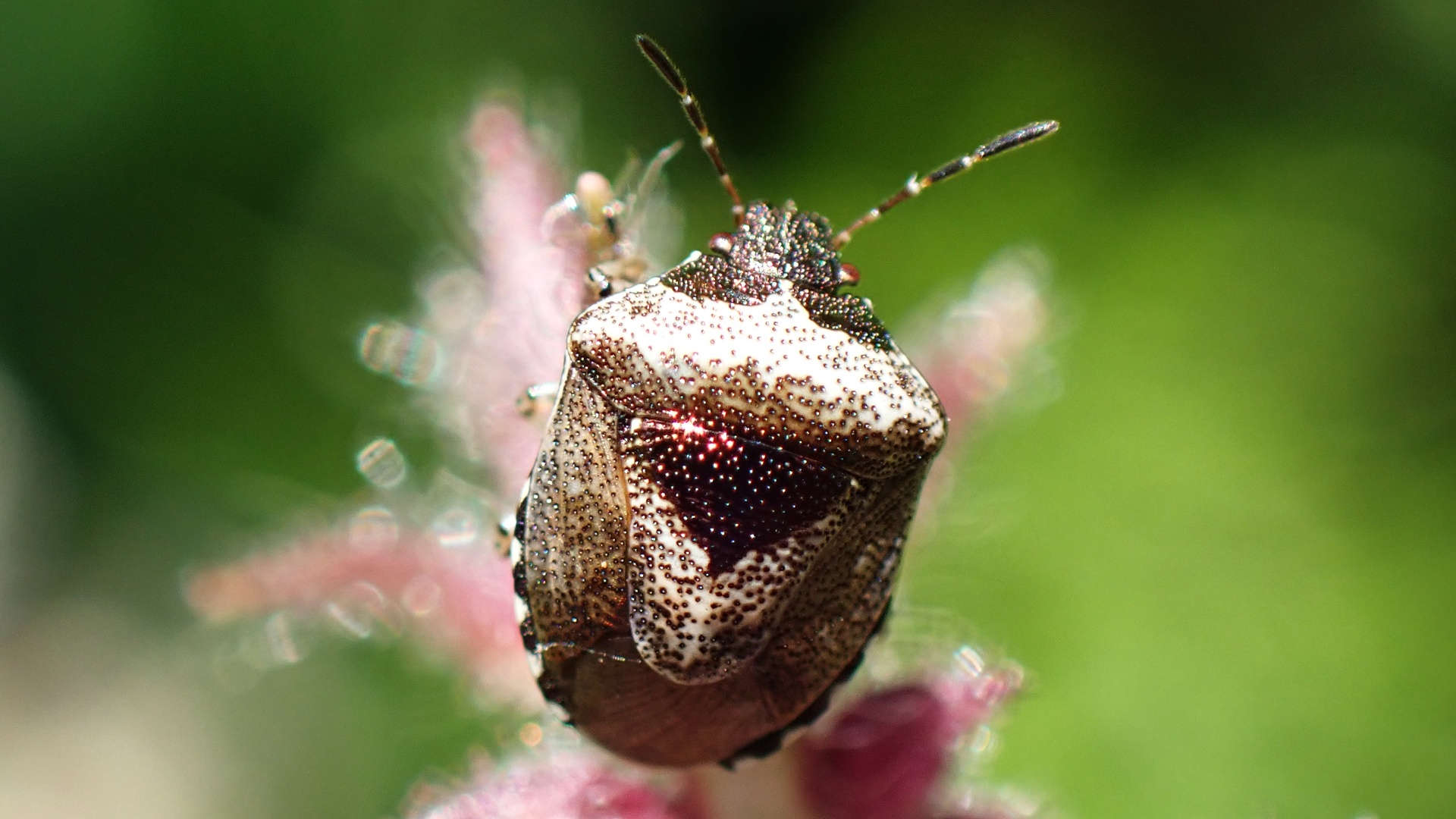
#
Common Green Shieldbug
Palomena prasina
During spring and summer adults (12-13mm) are bright green, finely punctured with dark spots. The antennae has reddish segments and there is a dark wing membrane. As winter approaches this species turns darker. Instars are light-green when they hatch from their eggs. They darken and within an hour or two there is a pattern on the back.
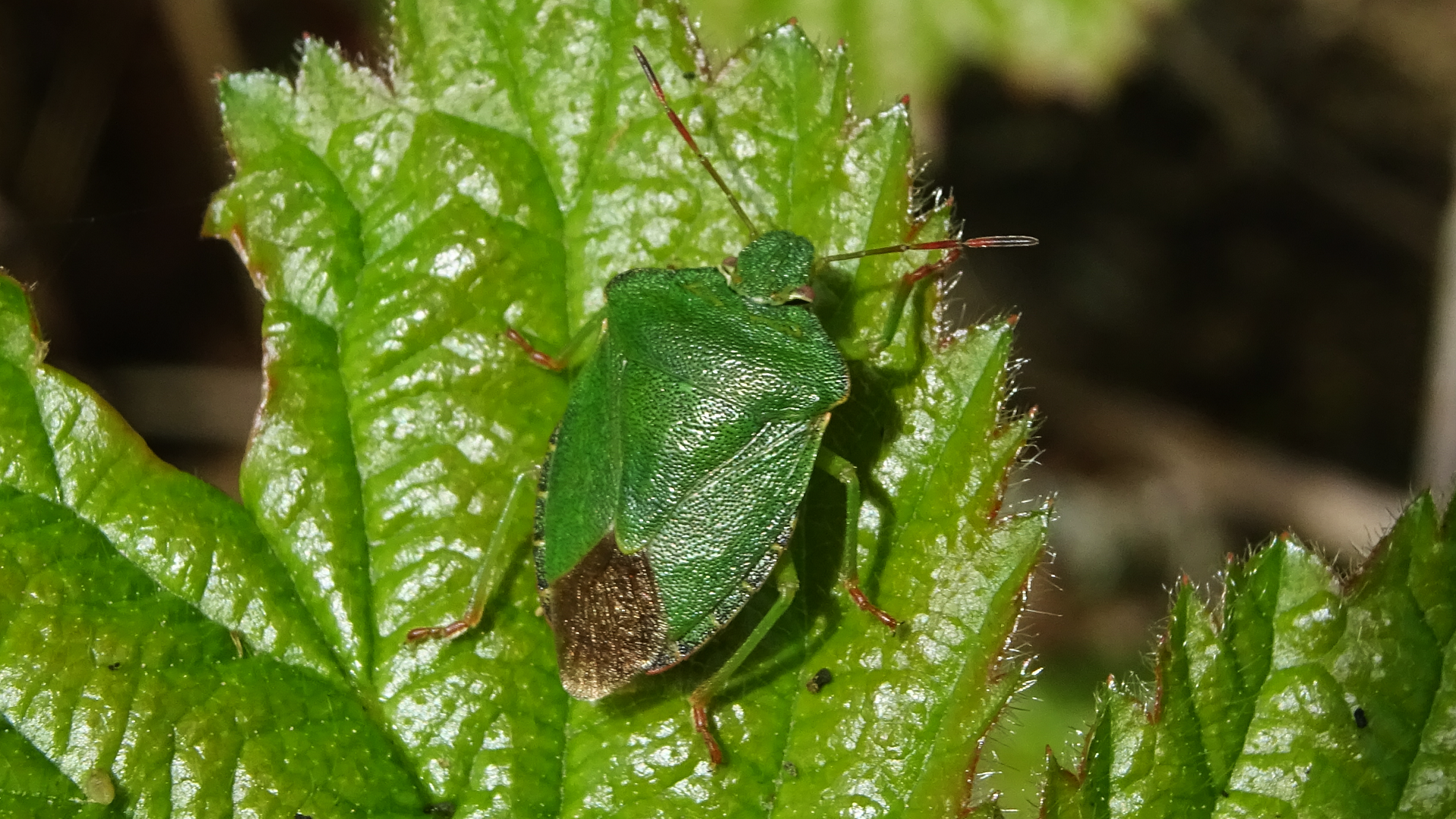

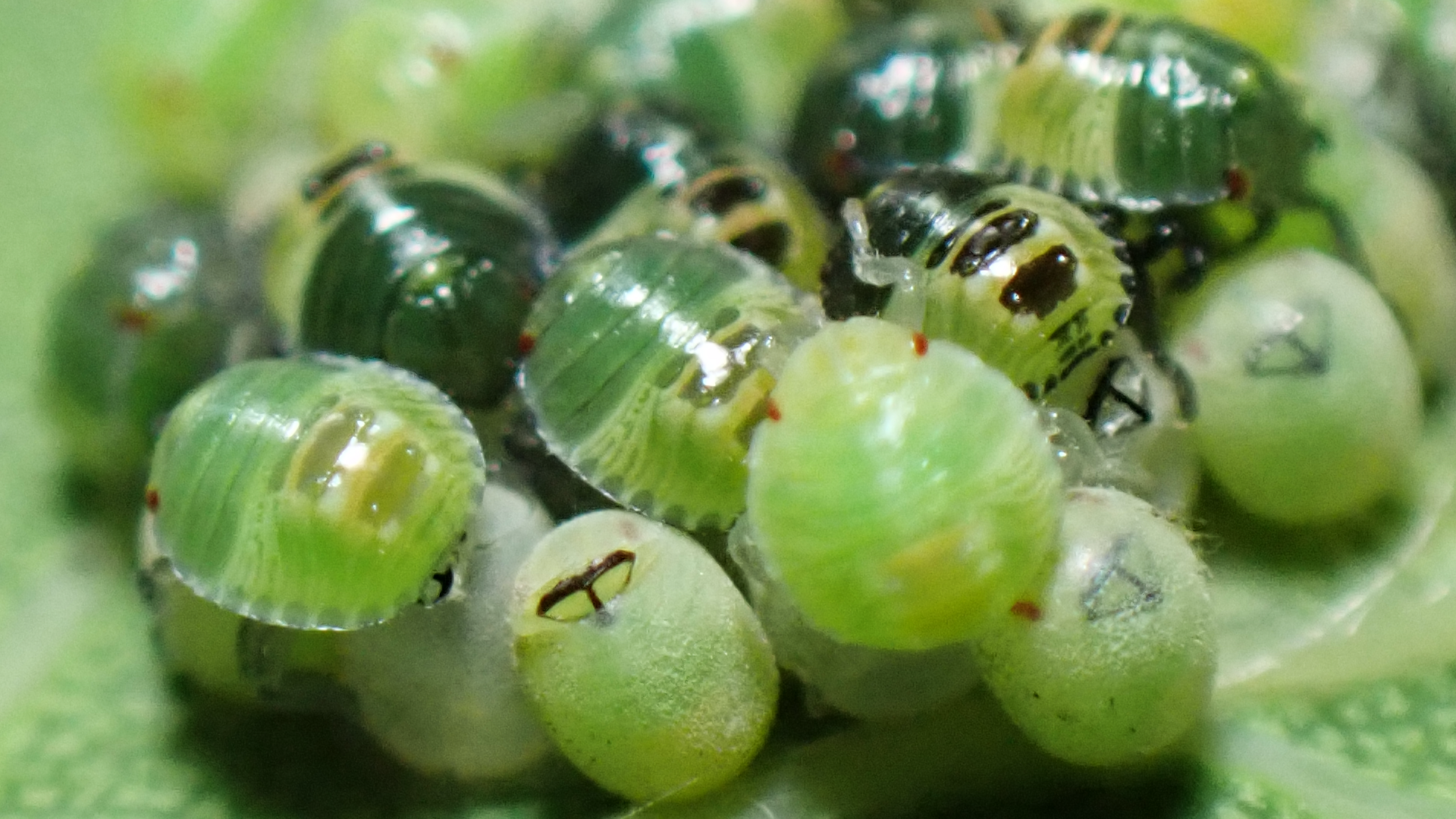
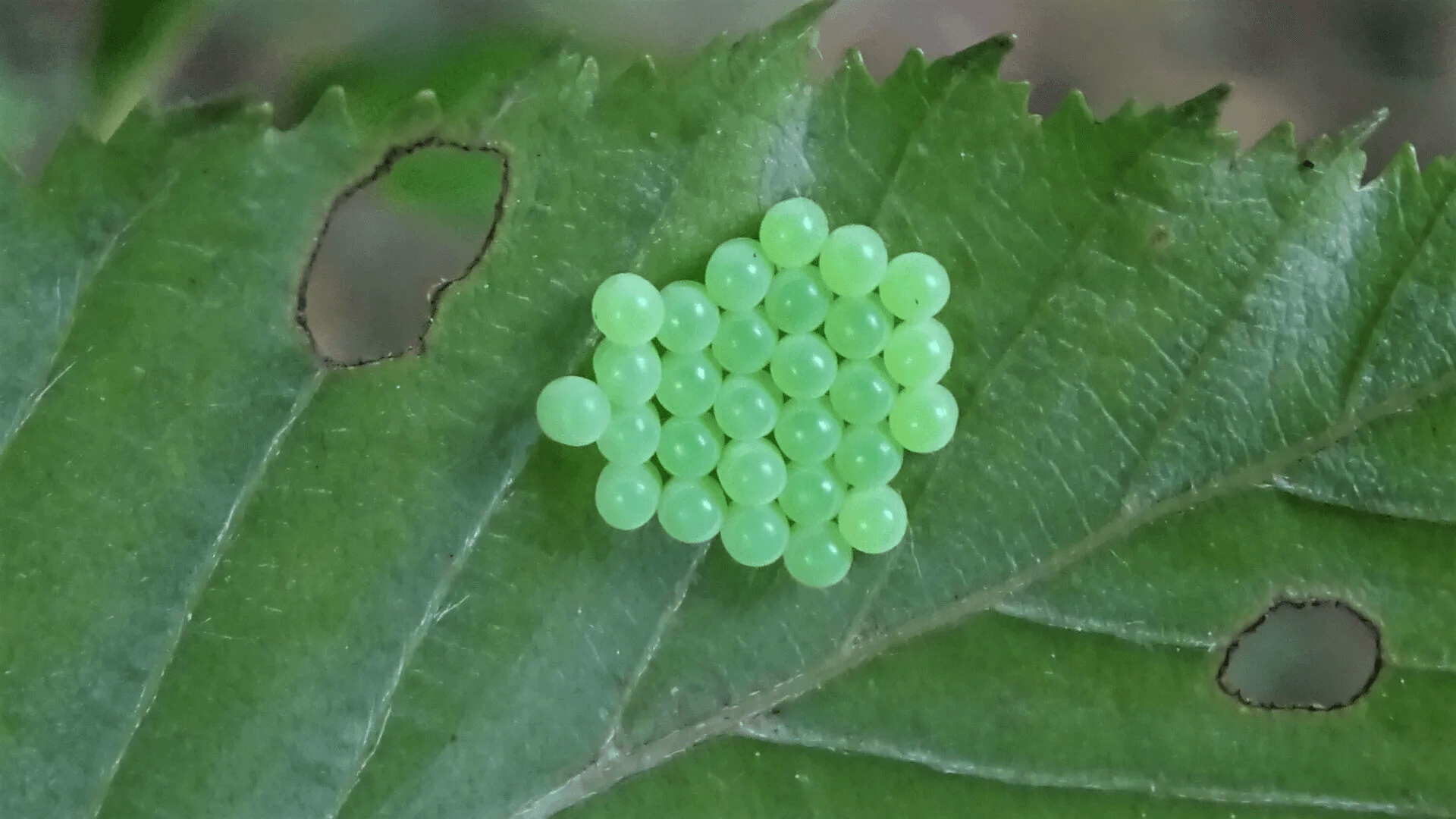
#
Hairy Shieldbug
Dolycoris baccarum
The Hairy Shieldbug is covered in long hairs. It is found throughout the year along woodland rides and on hedgerows. This species overwinters as an adult and emerges during spring to mate. Larval foodplants include Blackthorn and other members of the Roasaceae family. This species is also known as the Sloe Bug.
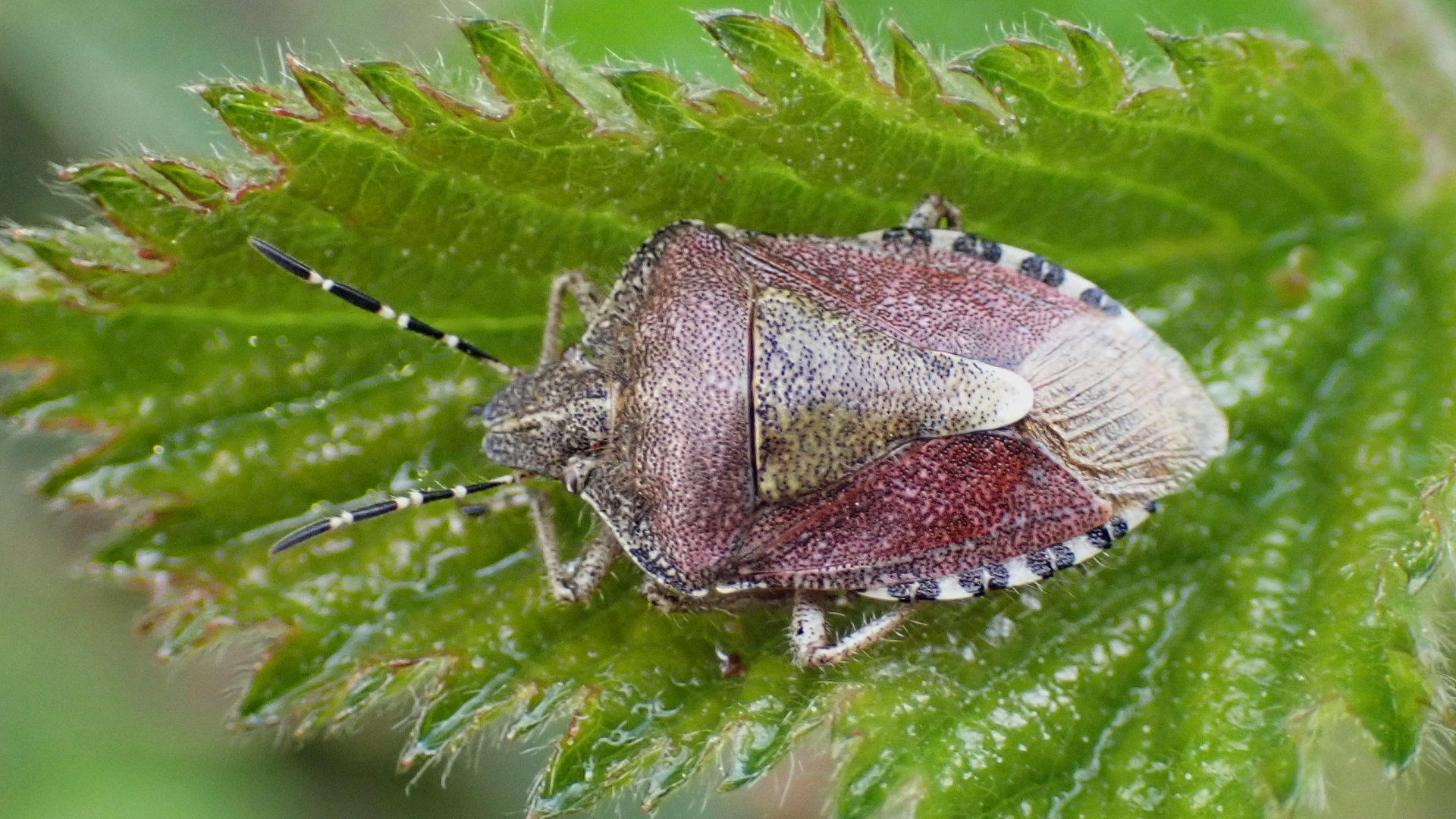

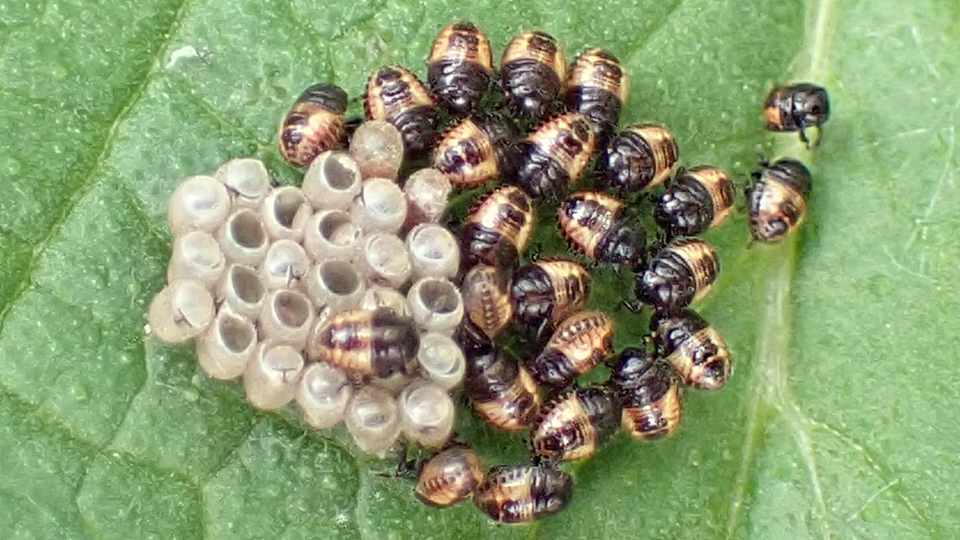
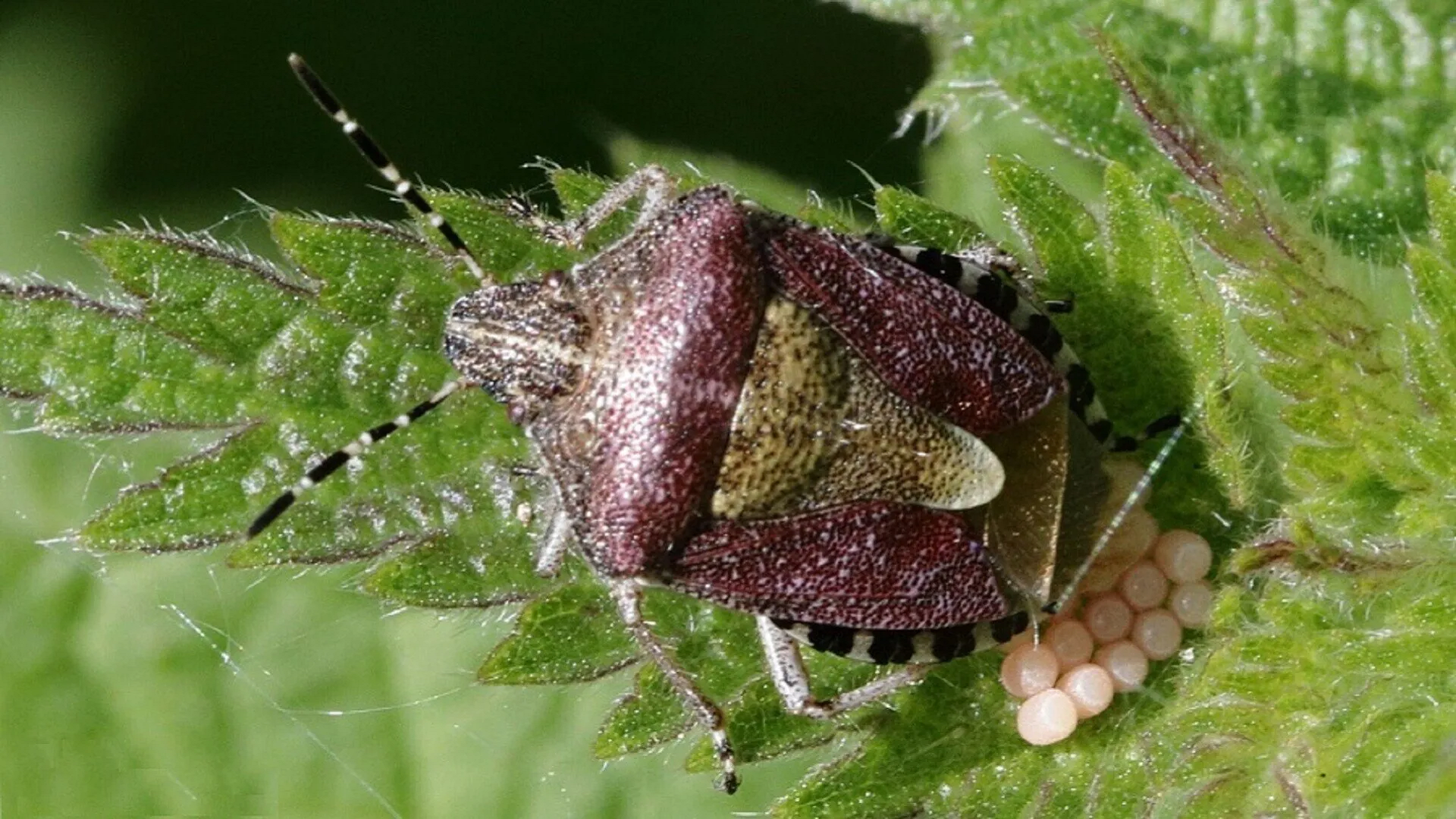
#
Forest Shieldbug
Pentatoma rufipes
This species has orange/brownish legs and slightly hooked projections at the front of the pronotum. The spot at the tip of the scutellum ranges from orange to cream. These shieldbugs overwinter as young nymphs which feed mainly on Oak. New adults are generally seen from July until November, with egg laying taking place in August. The adults (11-14mm) are omnivorous, feeding on fruits and insects.
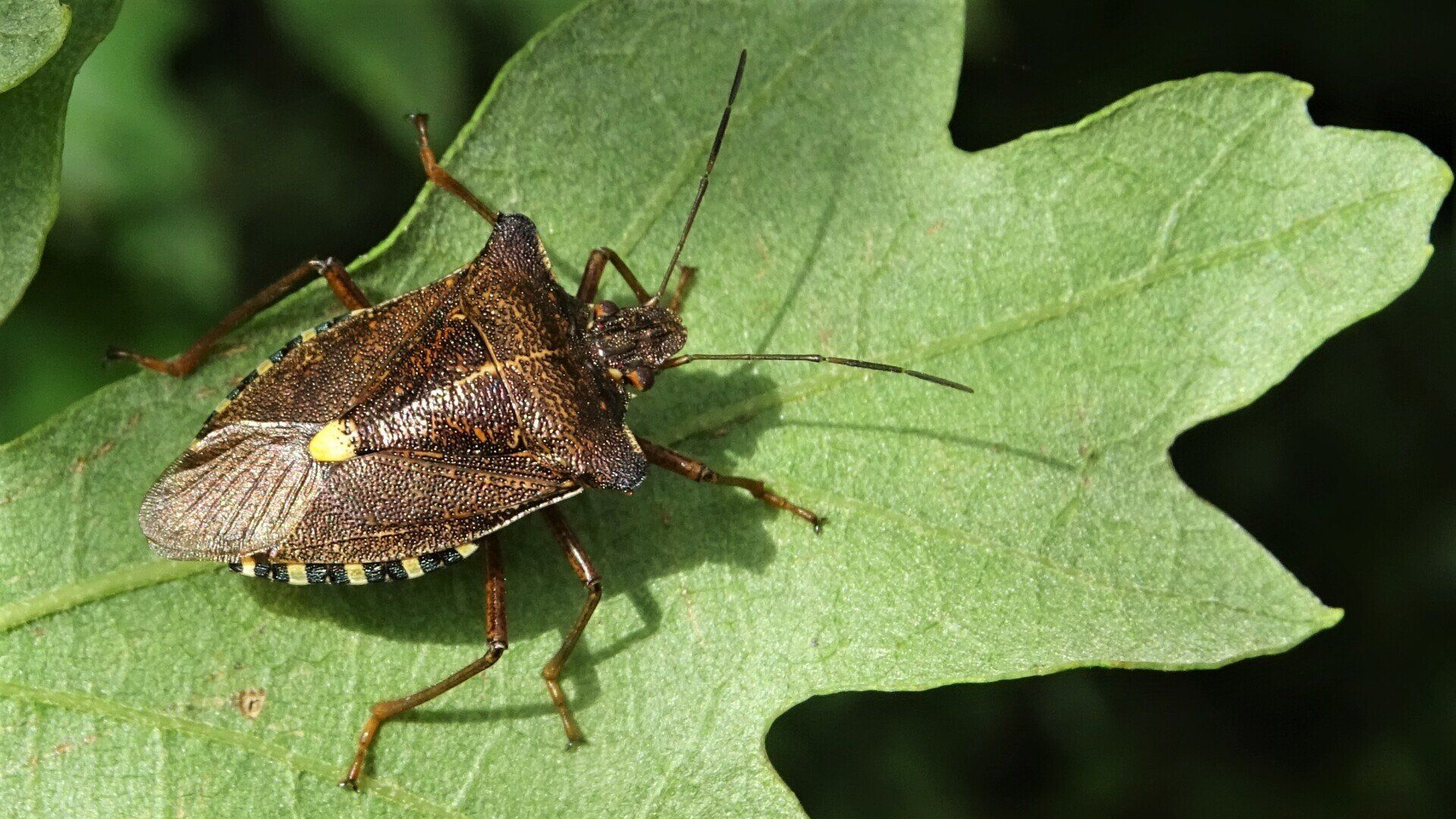
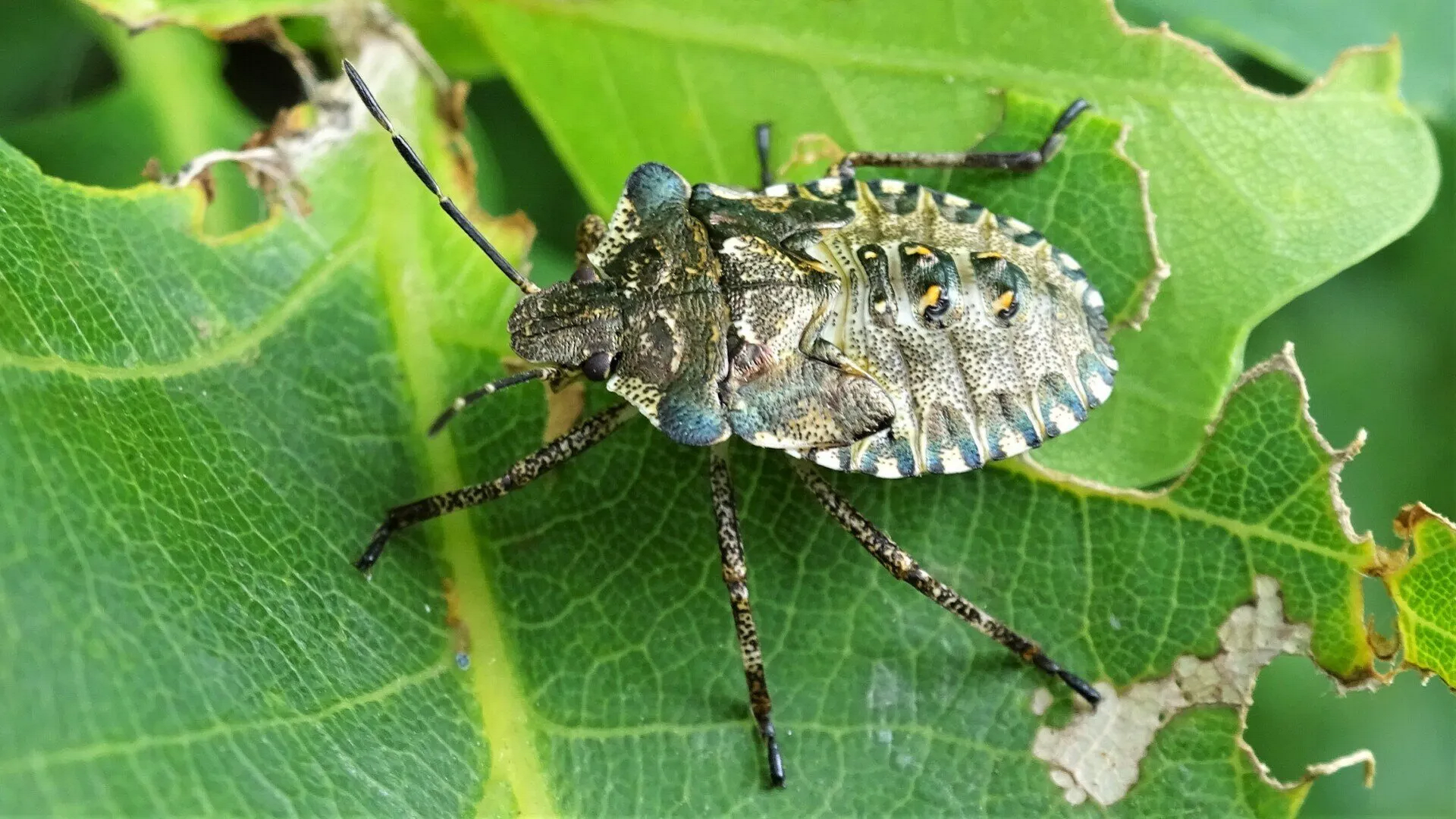
#
Gorse Shieldbug
Piezodorus lituratus
Adults (10-13 mm) that emerge and mate during spring are mainly green, while the new generation appearing late summer have purplish-red markings. They usually become darker before hibernation. Mainly found where European gorse is present. The eggs are barrel-shaped. When the orange instars emerge they will go through several stages before becoming adults. Foodplants they use include gorse, broom, and Dyer's greenweed.
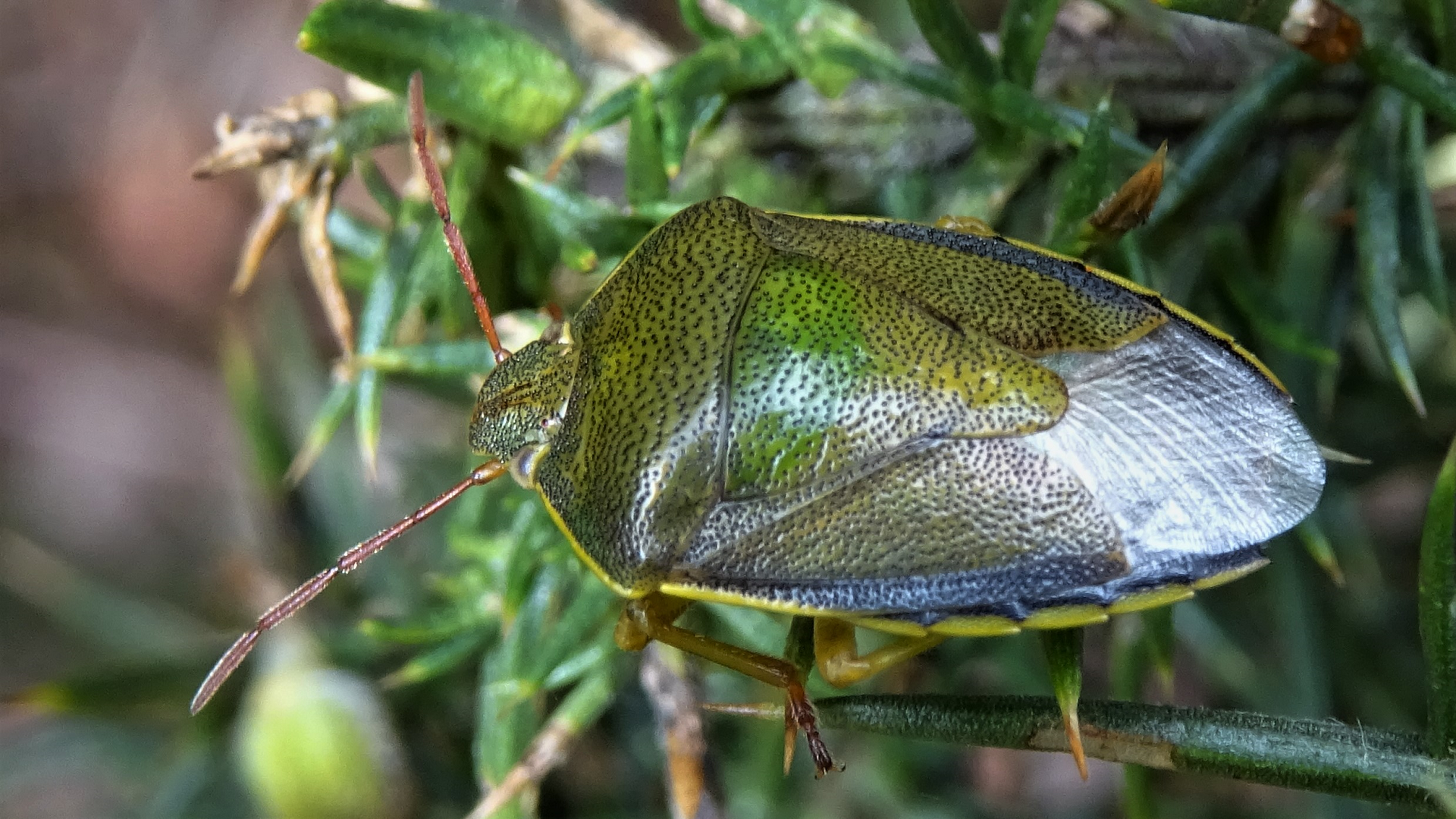
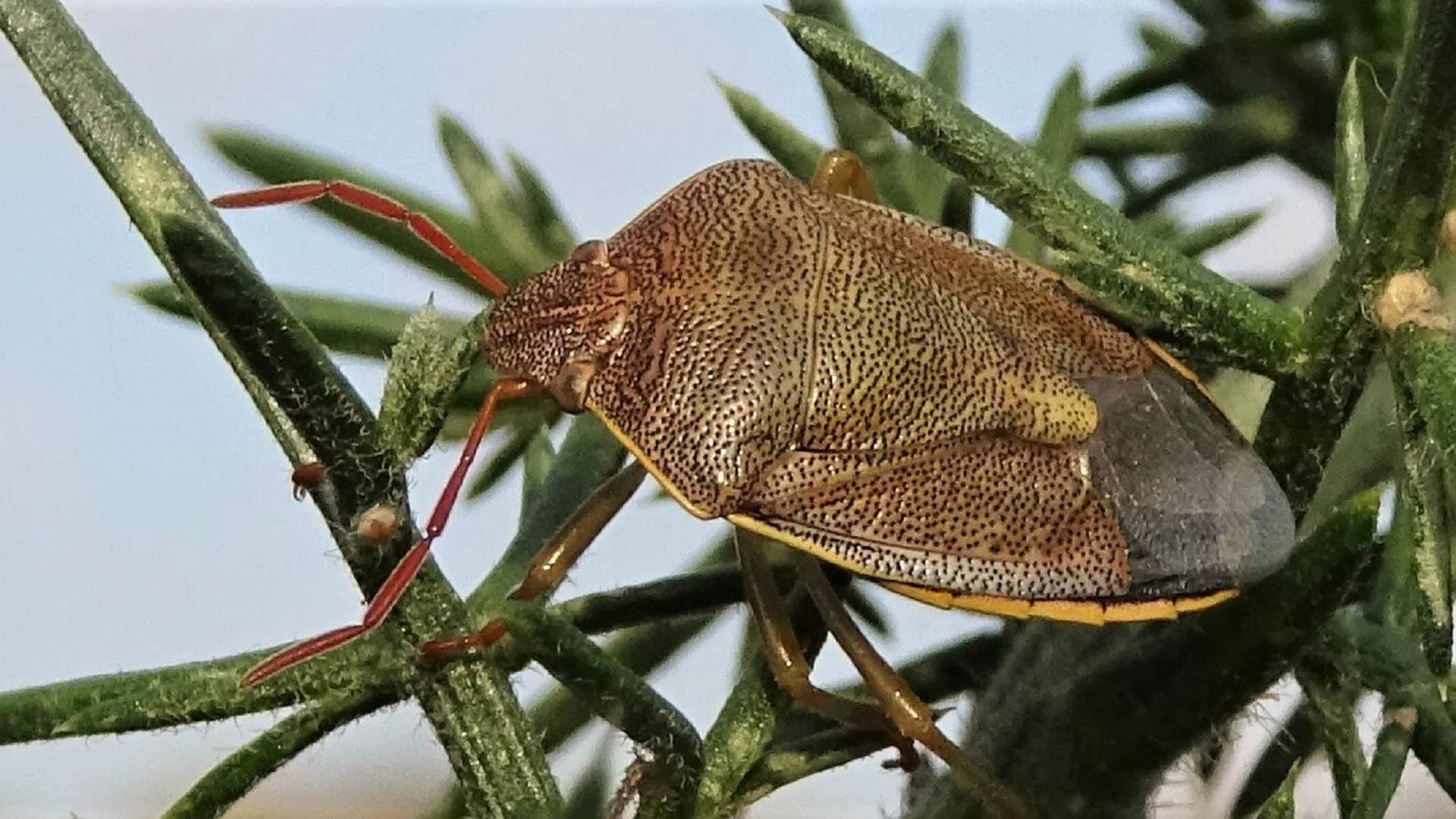
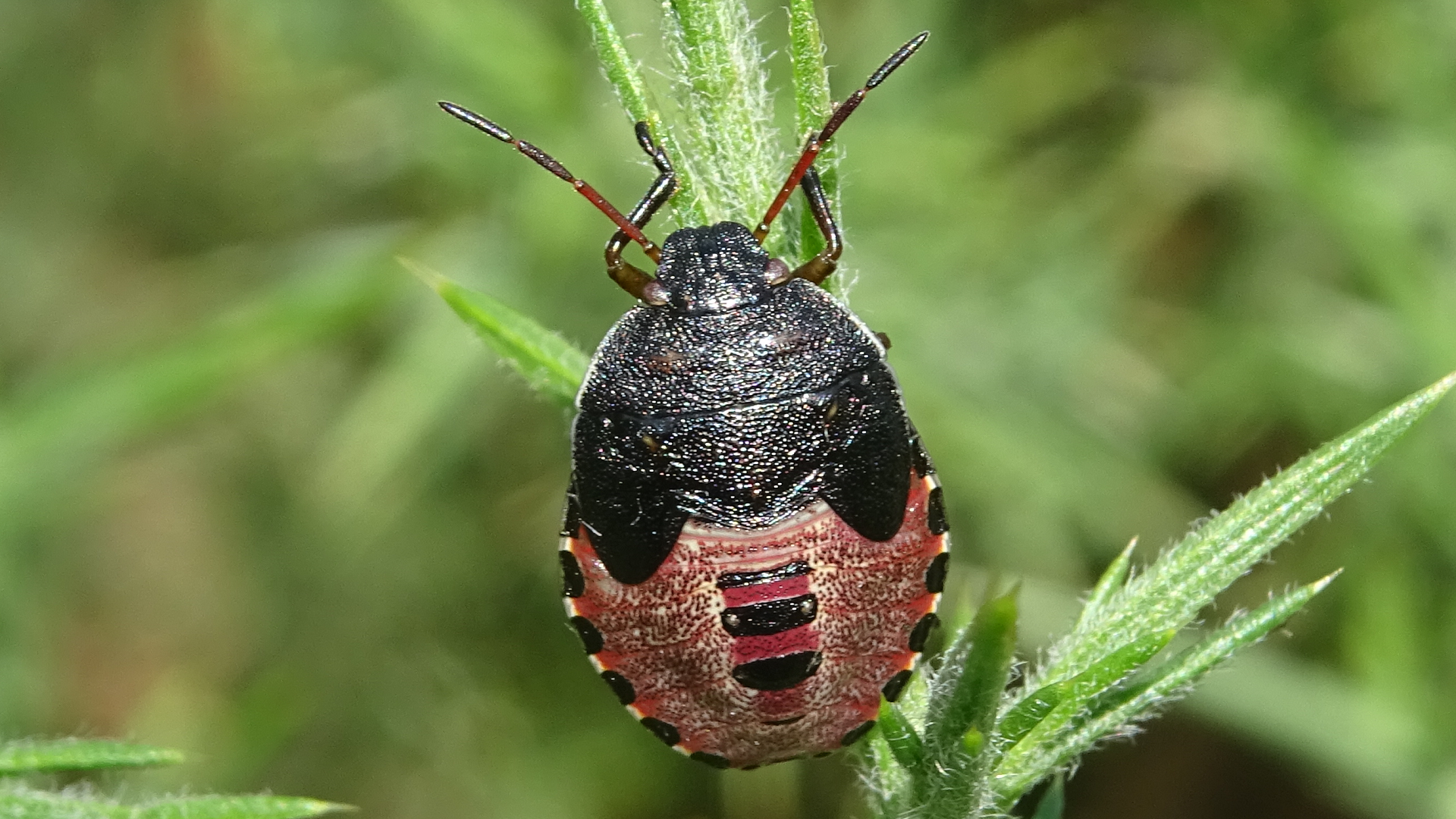
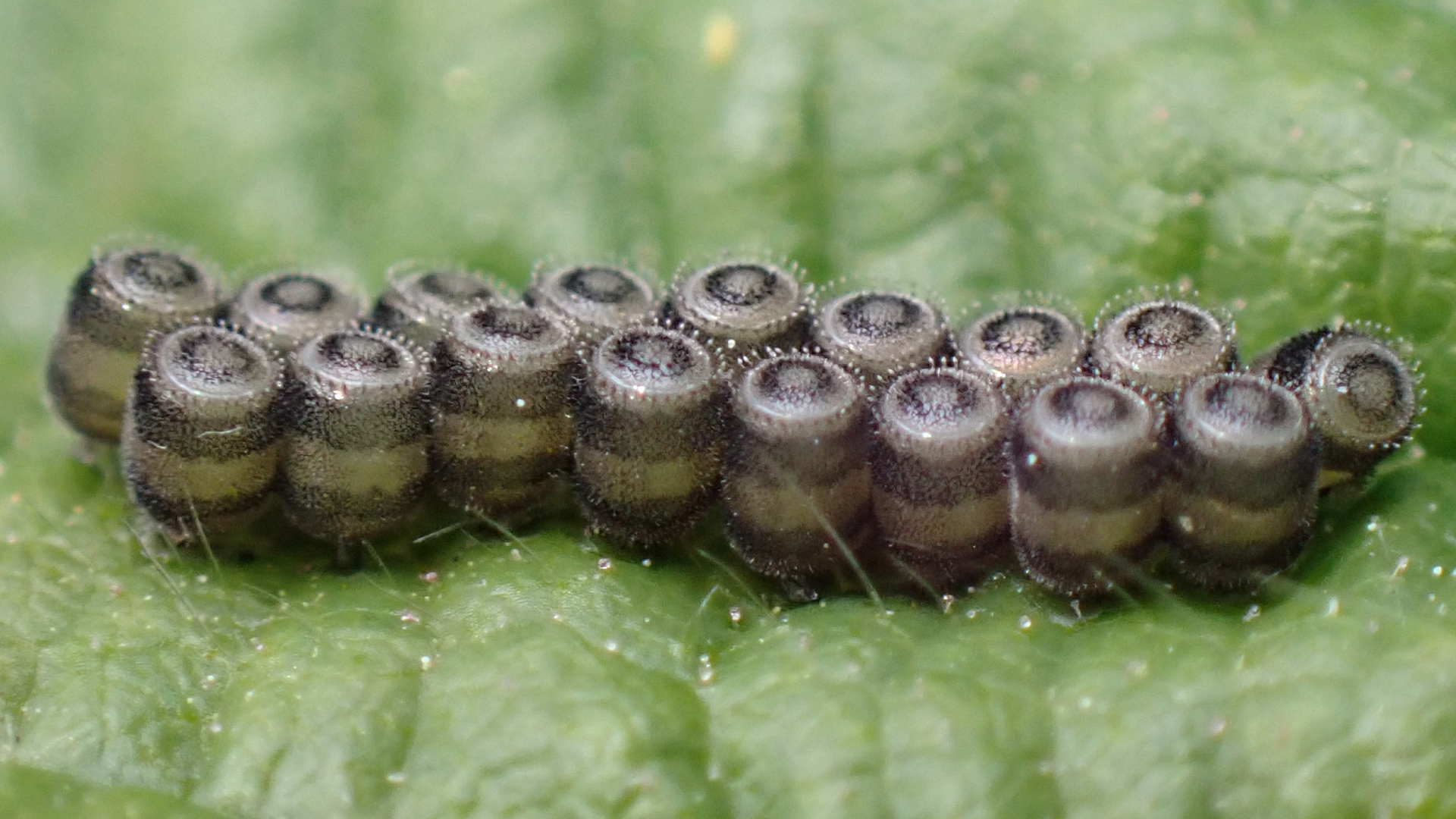

#
Brassica Bug
Eurydema oleracea
Markings on Brassica Bugs (6-7mm) vary in colour and may be red, yellow, white or orange. This species overwinters as adults and emerges in spring to mate. Larvae generally appear from May to July and can be found on garlic mustard and other plants in the Cabbage family. Also known as Cabbage Bugs.
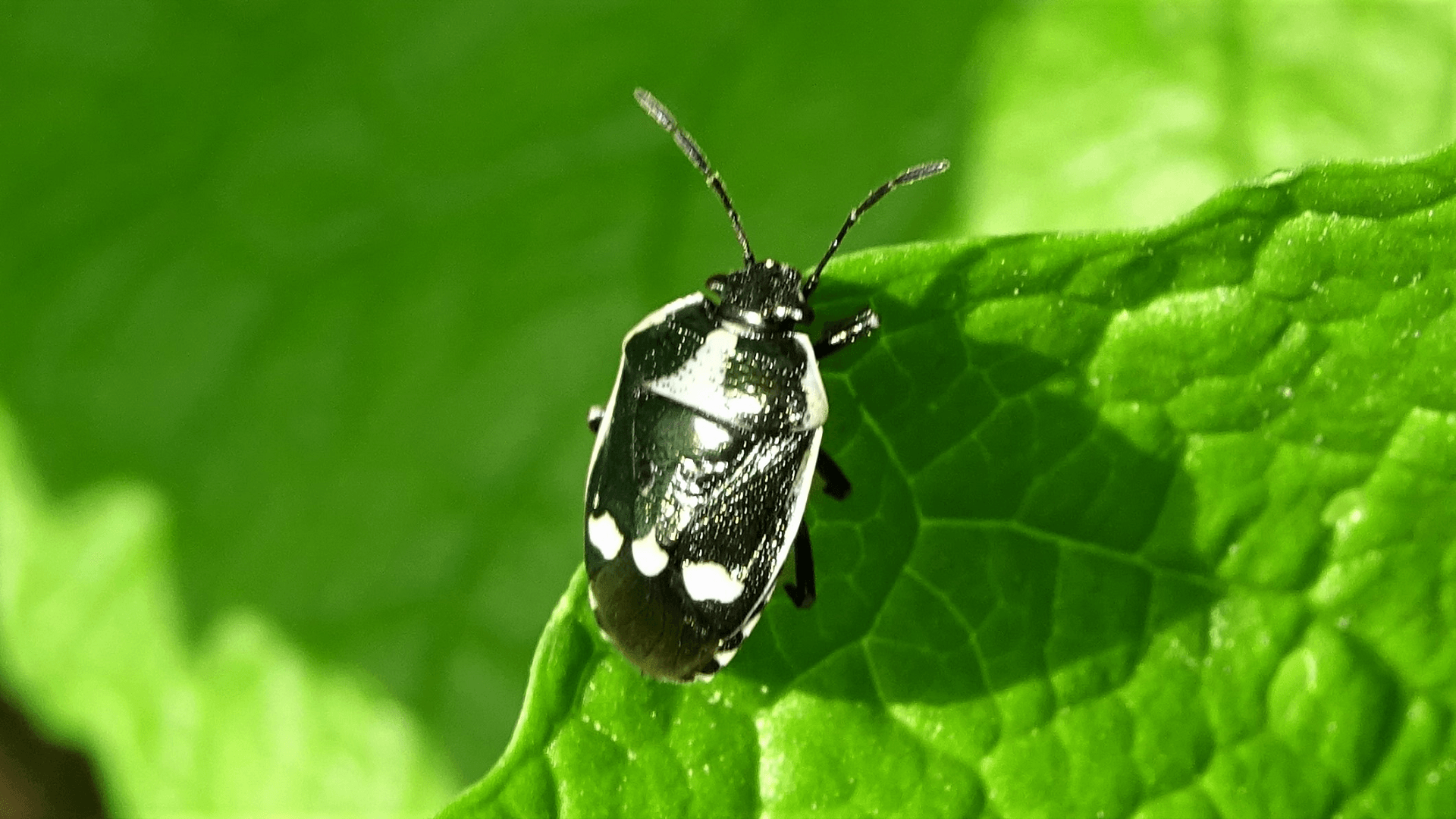
#
Vernal Shieldbug
Peribalus strictus
This greenish-brown shieldbug (9.5-11mm) is covered in dark punctures. The antennae are distinctively banded with the final two segments mostly black. There is a pale tip to the scutellum, a banded connexivum and a rather concave edge to the pronotum behind the eyes. Rarely recorded with most historic sightings likely to be migrants.

#
Bronze Shieldbug
Troilus luridus
A predatory woodland bug measuring 10-12mm in length. The penultimate antennal segment is orange banded and the legs are brown. There is one generation each year. Once hatched the nymphs feed on plants as well as other insects, especially caterpillars. The next generation of adults usually appear from July onwards.
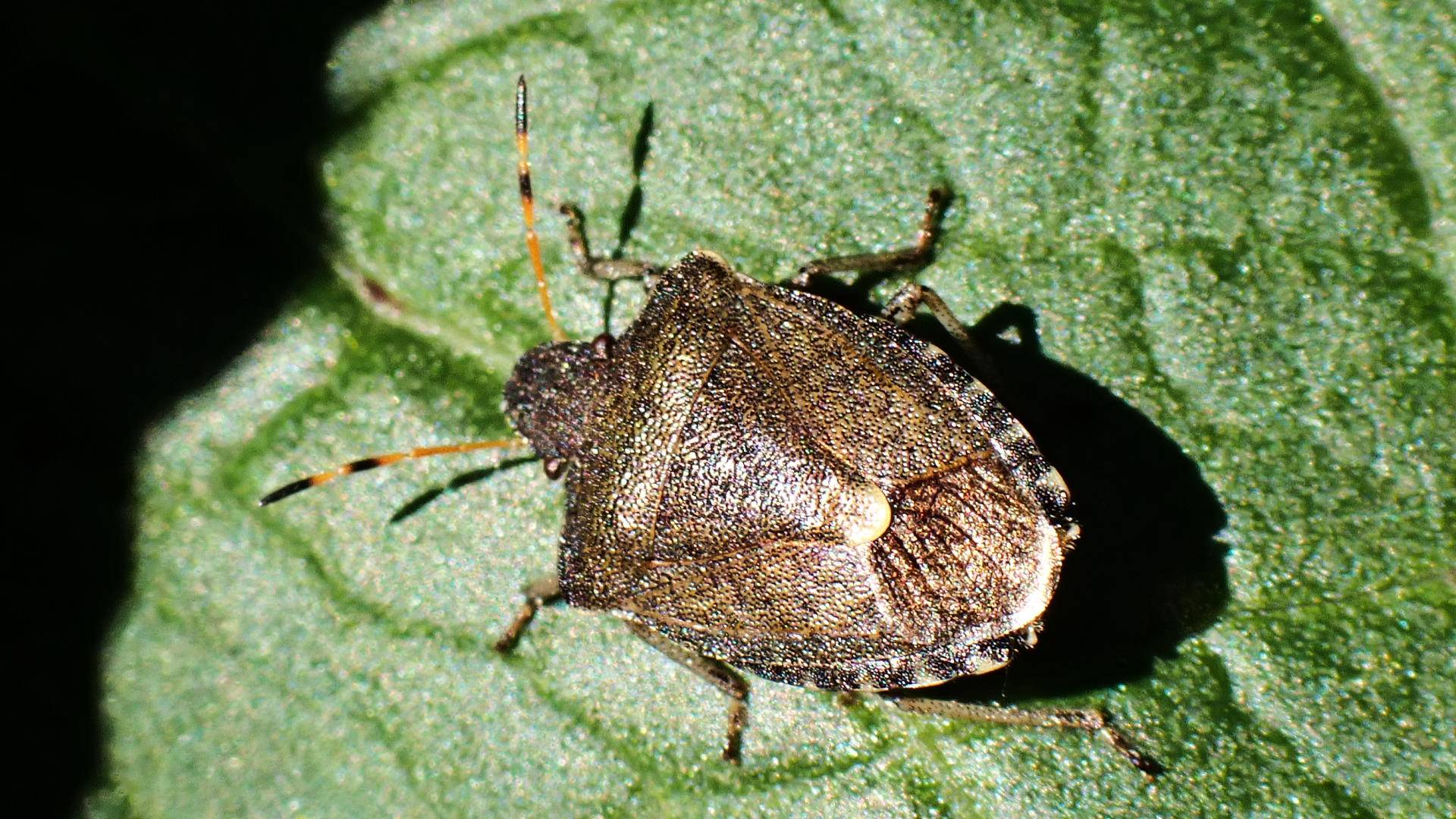
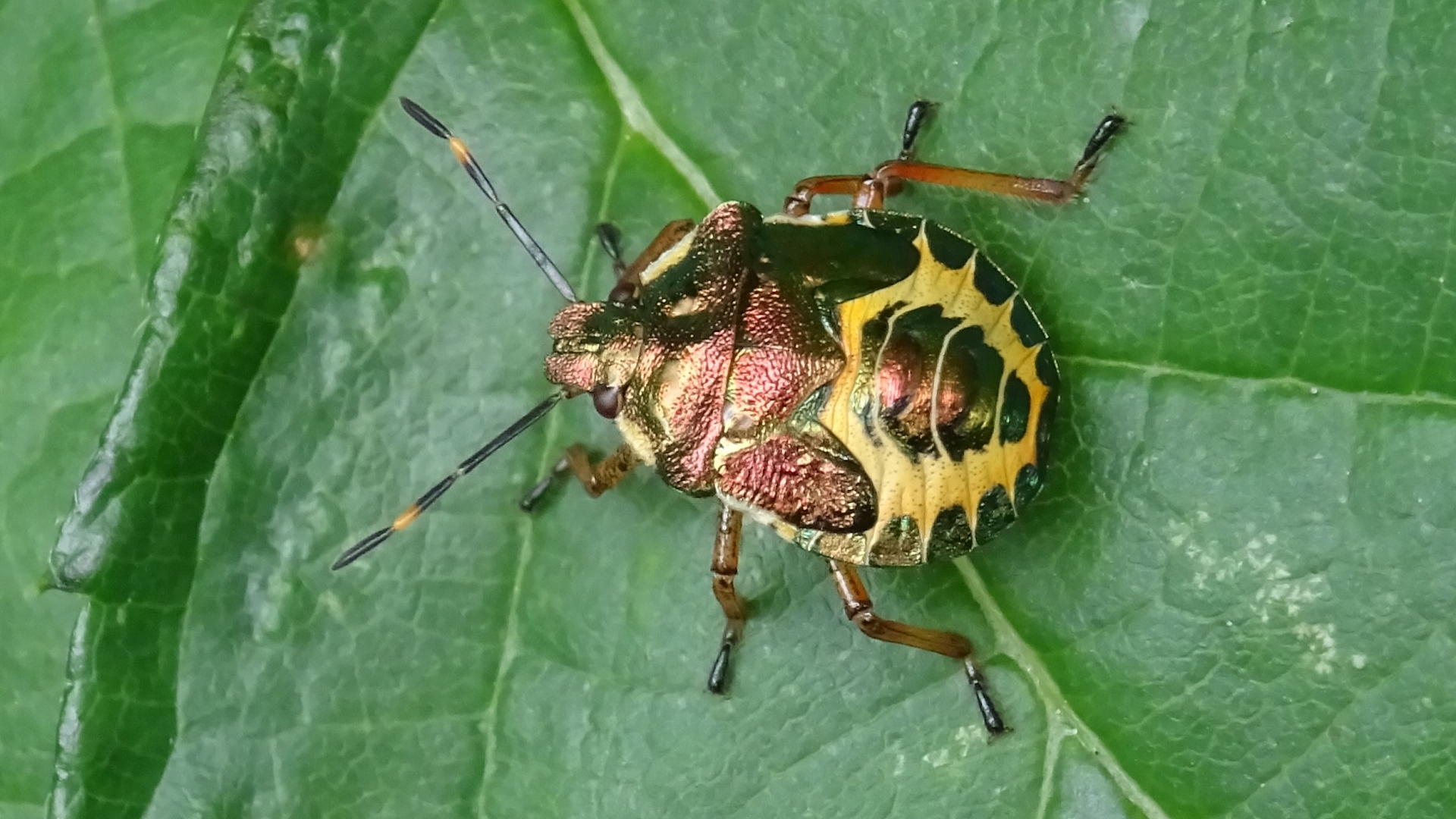
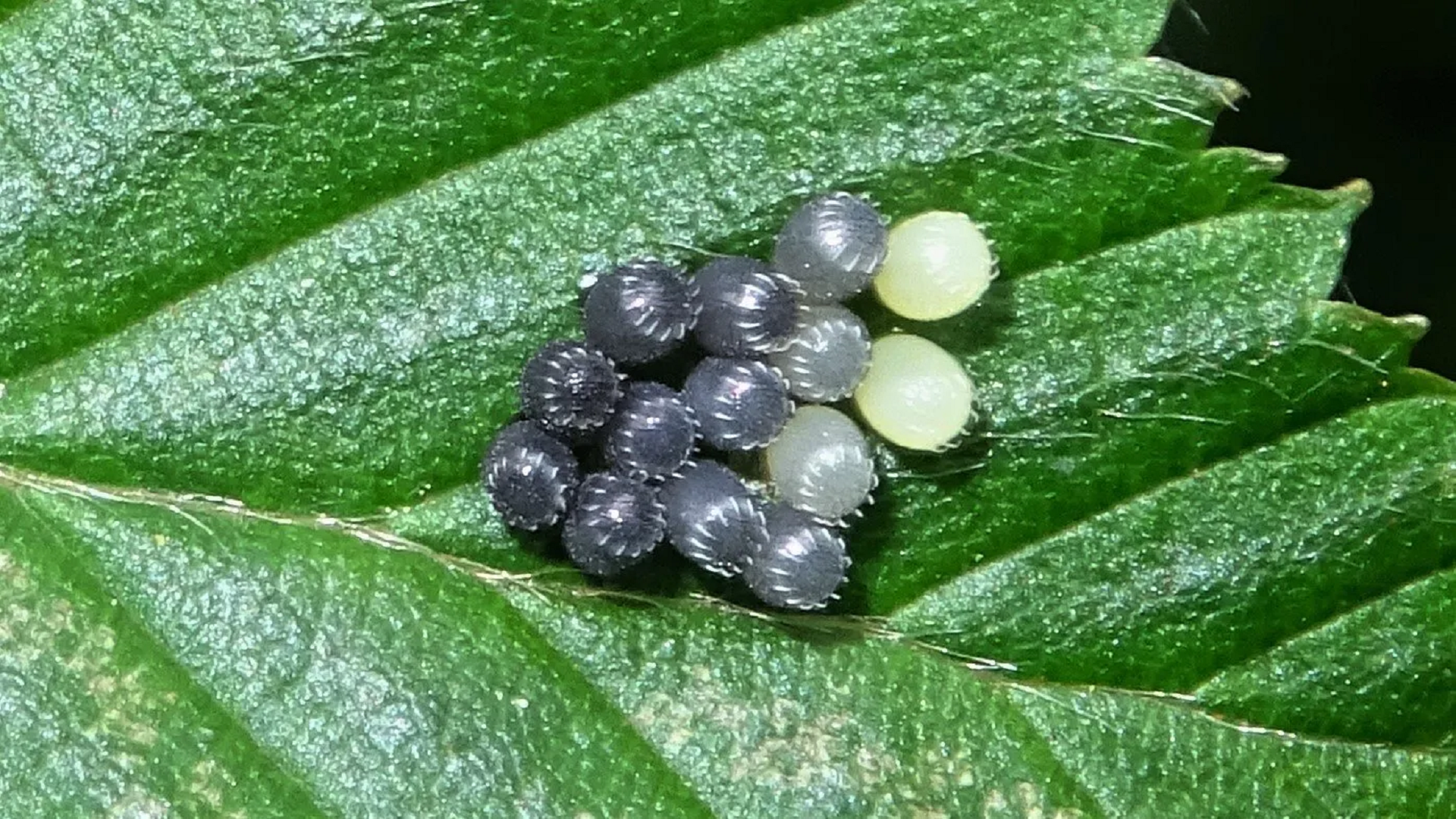
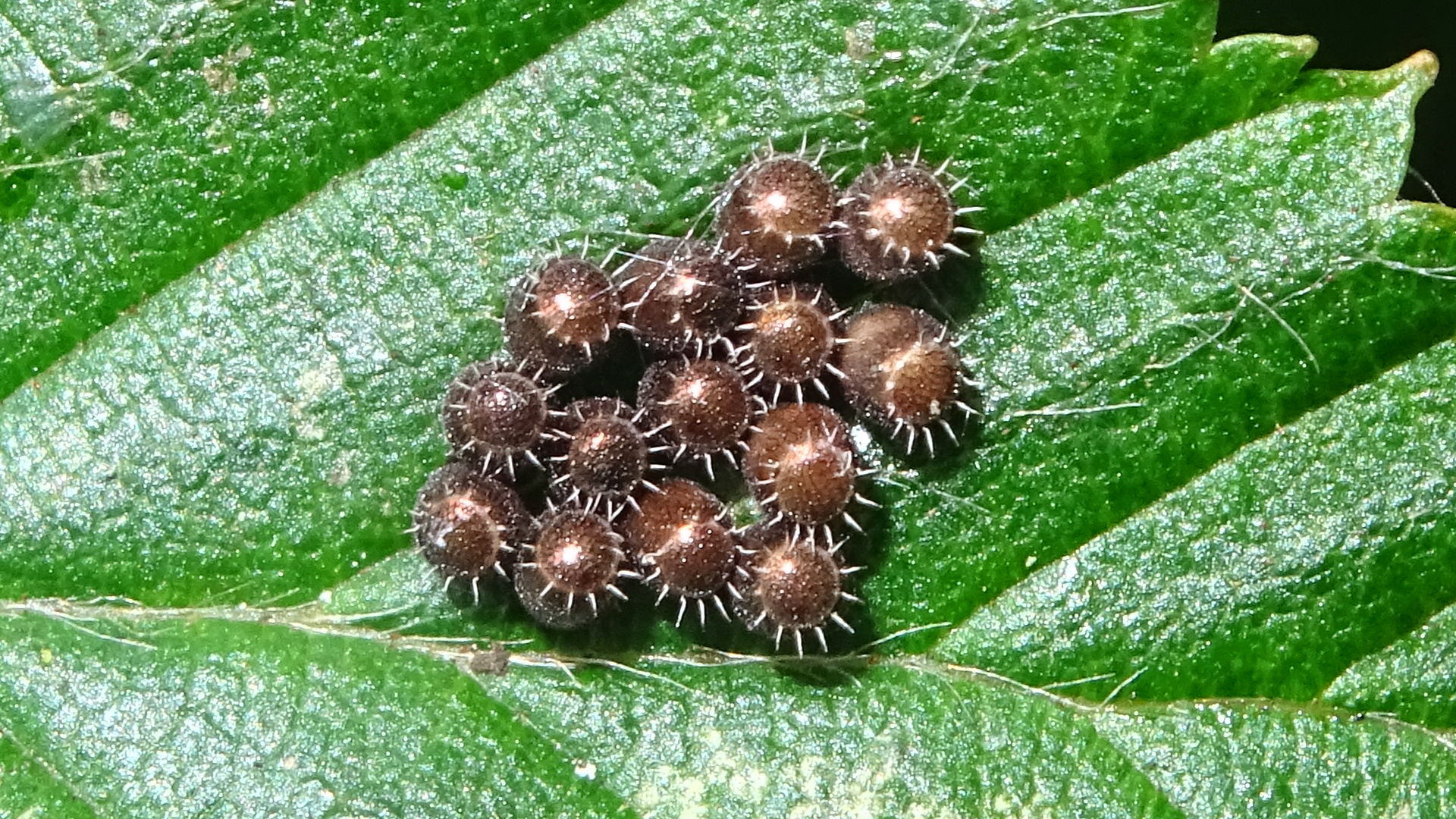
#
© hainaultforest.net. All rights reserved.


